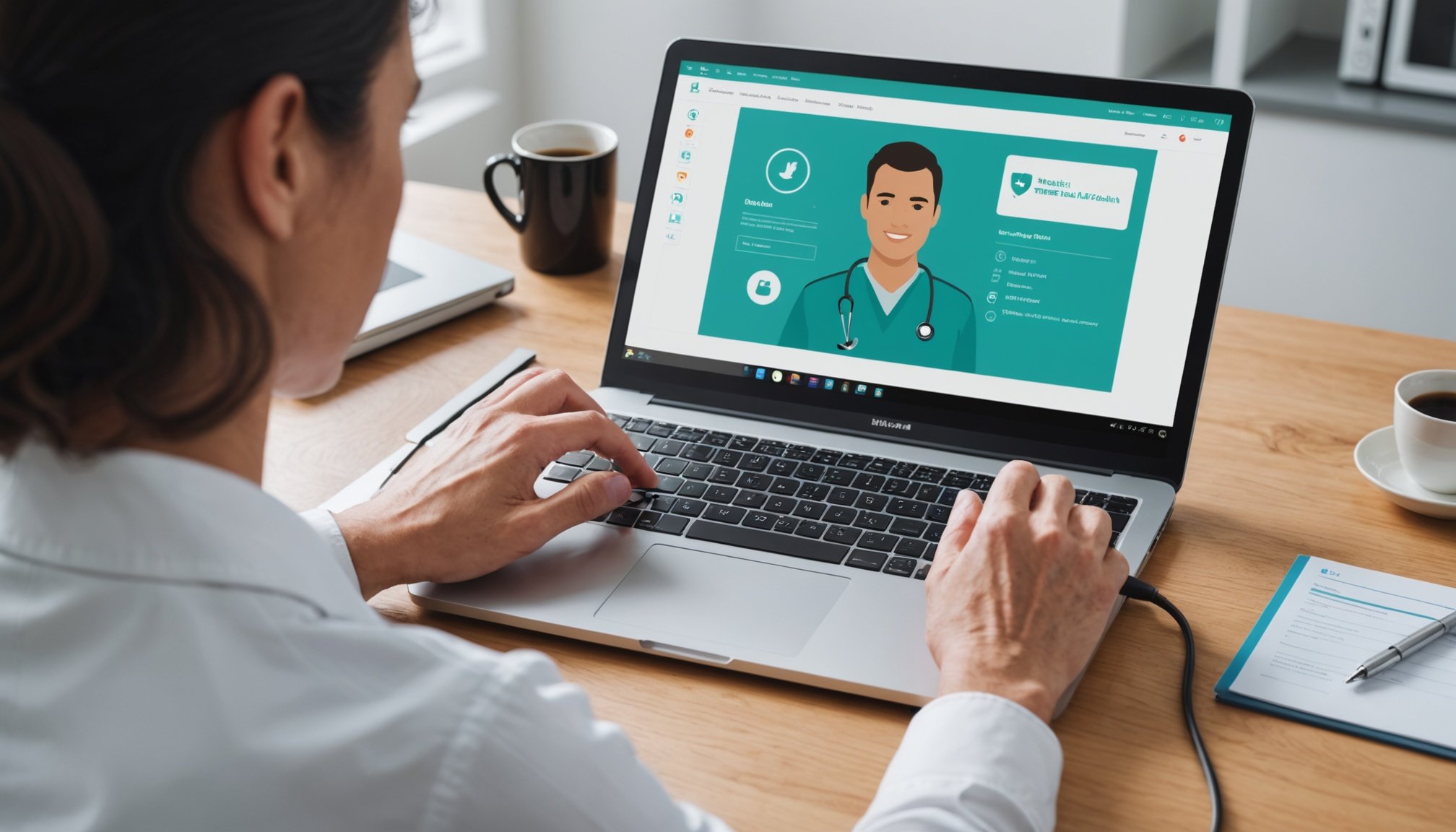Understanding UK Medical Data Compliance
Navigating UK medical data compliance is crucial for healthcare providers, especially with the increasing use of telehealth services. Adhering to telehealth regulations ensures patient data safety and trust in digital healthcare solutions.
Healthcare data protection under the UK’s legal framework, primarily governed by GDPR (General Data Protection Regulation) and NHS (National Health Service) guidelines, is essential. These standards dictate how patient data should be collected, stored, and processed, focusing on transparency and security. GDPR specifically mandates patient consent for data usage, while NHS guidelines set protocols for handling sensitive information within healthcare systems.
Additional reading : Step-by-Step Guide to Launching Your Own UK Digital Content Creation Agency
Failing to comply with these regulations can lead to severe consequences for healthcare providers. Regulatory bodies can impose hefty fines, damage the provider’s reputation, and even lead to legal action. Moreover, non-compliance could result in a loss of patient trust, hindering the growth and effectiveness of telehealth services.
To ensure compliance, healthcare organisations should consistently review their data handling practices and adapt to any regulatory changes. Implementing robust security measures, training staff, and ensuring that technologies used in telehealth adhere to healthcare data protection standards are prudent steps in maintaining compliance. Achieving this will safeguard patient information and support the trustworthy development of digital health innovations.
In the same genre : Step-by-Step Guide to Launching Your Own UK Digital Content Creation Agency
Key Legal Frameworks for Telehealth Platforms
Navigating legal frameworks for telehealth is crucial for ensuring compliance and protecting patient data. Here, we explore foundational structures such as GDPR, NHS guidelines, and the Data Protection Act 2018.
General Data Protection Regulation (GDPR)
The General Data Protection Regulation (GDPR) significantly impacts telehealth platforms by imposing stringent rules on data handling. It requires transparency in data processing, ensuring that the data subject’s consent is clearly obtained and documented. Implicit in GDPR is the principle of data minimisation, which calls for limiting data collection to only what is necessary.
NHS Data Security and Protection Toolkit
The NHS Data Security and Protection Toolkit provides a comprehensive set of guidelines ensuring that telehealth services adhere to robust data security standards. These guidelines aim to preserve patient confidentiality and maintain trust. They mandate the use of secure communication channels and the proper encryption of patient information, which are crucial components in safeguarding data against breaches.
Data Protection Act 2018
The Data Protection Act 2018 complements GDPR by providing a framework for safeguarding personal data within telehealth services in the UK. It outlines clear obligations for data processors and controllers, reinforcing the need for lawful, fair, and transparent data processing. This Act supports telehealth platforms in fostering accountability and compliance with legal obligations.
Best Practices for Data Security in Telehealth
In the rapidly evolving field of telehealth, data security best practices are paramount for safeguarding sensitive patient information. One of the cornerstones of telehealth data protection is implementing robust encryption methods for data transmission. Encryption transforms data into a readable format only accessible to those possessing the correct decryption key, ensuring that patient data is shielded from unauthorised access during transmission across networks.
Regular security audits and risk assessments are vital components of effective cybersecurity measures. These processes help identify vulnerabilities within the telehealth system, enabling healthcare providers to address potential threats proactively. Conducting these audits ensures compliance with evolving regulations, and maintaining trust with patients by proving that their data is secure.
Another critical aspect involves training staff on data handling and privacy measures. Employees must be knowledgeable about identifying phishing attempts, using secure passwords, and understanding the importance of patient confidentiality. This education reduces the risk of human error, which often accounts for breaches in data security.
By adopting these practices, healthcare providers can enhance their cybersecurity measures, ultimately protecting both personal health information and the integrity of their telehealth services.
Technology Integration for Compliance
Integrating high-quality technology solutions for telehealth is essential for healthcare providers committed to maintaining compliance while offering modern care options. As telehealth becomes increasingly prevalent, organizations must implement comprehensive systems that balance innovation with stringent regulatory requirements. Below, we delve into how intelligent compliance software and secure data integration can enhance healthcare operations.
Electronic Health Records (EHR) Systems
Choosing the right Electronic Health Records (EHR) systems is pivotal. EHR systems should not only streamline patient data management but also align with regulatory mandates. A compliant EHR system ensures all patient data is handled with the utmost care, safeguarding against breaches and maintaining patient trust. A robust EHR system seamlessly integrates with other solutions like telemonitoring tools, bolstering overall security.
Remote Patient Monitoring Technologies
Remote patient monitoring technologies enable real-time health tracking, offering convenience without compromising data privacy. These systems must be equipped with encryption protocols and secure data integration methods to protect sensitive health information. By doing so, they assure compliance with healthcare regulations, providing peace of mind to both providers and patients.
Compliance Management Software
Employing compliance management software is crucial for staying abreast of evolving regulatory landscapes. This software assists in tracking regulation adherence, conducting audits, and ensuring that healthcare practices are up-to-date with compliance standards. It’s an indispensable tool that manages not just data security but also facilitates seamless operations across the healthcare spectrum, ensuring trust and operational efficiency.
Case Studies of Successful UK Telehealth Platforms
Examining telehealth case studies in the UK reveals valuable insights into successful telehealth platforms. Many leading examples show remarkable compliance strategies, aligning tightly with both UK and international health regulations. These platforms demonstrate how effective adherence to guidelines not only ensures legal compliance but also builds trust with users.
-
Compliance Strategies: Successful UK telehealth platforms often employ a hybrid approach, integrating technical solutions with robust training programs for healthcare providers. This amalgamation helps maintain data security and patient confidentiality, crucial pillars of legal compliance.
-
Key Lessons Learned: Platforms like Babylon Health have taught us the importance of user-centric design. Ensuring ease of use for patients and healthcare providers alike is essential. Additionally, continuous feedback loops from users can significantly enhance service delivery and compliance.
-
Scalability and Adaptability: The case of Push Doctor demonstrates the flexibility and scalability of these platforms. A robust IT infrastructure allows them to adapt to regional differences in legal requirements and scale services nationwide without a hitch.
By examining these UK telehealth examples, other telehealth services can adopt practices that bridge compliance and user satisfaction effectively. An unwavering focus on compliance not only safeguards against legal pitfalls but also serves as a foundation for scalable and adaptive health solutions.
Resources for Navigating Medical Data Compliance
Complying with healthcare data regulations is crucial in today’s digital age, especially as telehealth becomes more prevalent. Utilizing appropriate compliance resources ensures that all operations involving medical data adhere to the necessary standards.
Government and Regulatory Bodies
Several key regulatory bodies are vital in telehealth compliance. The Health Insurance Portability and Accountability Act (HIPAA) sets standards for protecting sensitive patient information. The Office for Civil Rights (OCR) enforces these regulations, aiming to maintain confidentiality in patient data handling. Additionally, the Centers for Medicare & Medicaid Services (CMS) provides healthcare data regulatory resources to assist organizations in staying compliant while using telehealth services.
Industry Associations and Memberships
Joining industry associations can be beneficial for accessing shared knowledge and compliance resources. Organizations such as the American Health Information Management Association (AHIMA) and the Health Care Compliance Association (HCCA) offer continuous updates, tools, and community support, enabling members to stay informed and compliant with the latest regulatory changes.
Professional Training Programs
Ongoing education through professional training programs is critical for ensuring compliance. Such programs focus on the latest science, techniques, and regulations in the medical field. They help in bridging knowledge gaps, enhancing understanding, and equipping professionals with vital skills necessary for handling sensitive healthcare data. Engaging in these initiatives fosters a robust understanding of regulatory demands, thereby mitigating the risk of data breaches.











